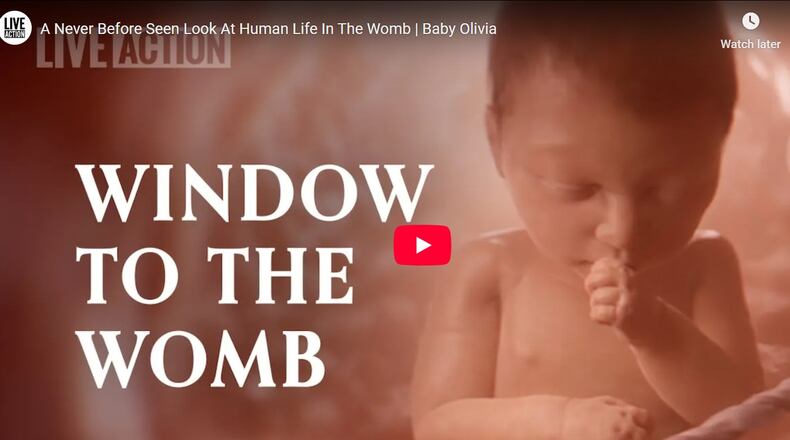“This is the moment life begins,” a narrator says in the video as a depicted sperm fertilizes an egg. “A new human being has come into existence. At fertilization, her gender, ethnicity, hair color, eye color and countless traits are already determined.”
The proposal would also require “high-definition ultrasound video, at least three minutes long, that shows the development of the brain, heart, sex organs, and other vital organs in early fetal development,” according to a nonpartisan analysis of the bill.
The bill, as written, would require such instruction to begin in the 2026-2027 school year and would forbid the Ohio Department of Education and Workforce from developing curriculum that counters the bill.
It would also require the Department of Education and Workforce to conduct an annual audit to ensure schools are adhering to the law, and give the Ohio Attorney General the power to sue violating schools for damages.
In HB 485’s first hearing Tuesday, sponsor Rep. Melanie Miller, R-Ashland, told members of the House Education Committee that her bill “sends a strong message about the importance of fostering scientific literacy in our classrooms” and would strengthen the state’s educational standards.
“The miracle of life is not something that can be easily explained. By equipping students with the resources and knowledge about the remarkable stages of life, we can promote informed discussion grounded in science and respect for human biology,” said Miller, who noted that six other states have recently passed similar legislation. “This bill does not seek to replace or alter current education standards but to enrich them with a focused, factual presentation of human development.”
Rep. Sean Brennan, D-Parma, raised concerns that HB 485 would violate the Ohio Constitution, which he said “prohibits special legislation that benefits one private organization when a general law could apply more broadly.”
“By naming a single company and its product, this provision appears to give that private entity a statutory monopoly in our classrooms,” he said.
Miller noted that she’d be open to amending the bill, if necessary, to take out direct reference to Live Action’s Baby Olivia video and instead allow the Ohio Department of Education and Workforce to develop a list of qualifying materials that could include, but is not limited to, Live Action’s video.
HB 485 will need more hearings before it’s passed out of its committee, which will give the public opportunity to testify in favor of or in opposition to the proposal.
For more stories like this, sign up for our Ohio Politics newsletter. It’s free, curated, and delivered straight to your inbox every Thursday evening.
Avery Kreemer can be reached at 614-981-1422, on X, via email, or you can drop him a comment/tip with the survey below.
About the Author

